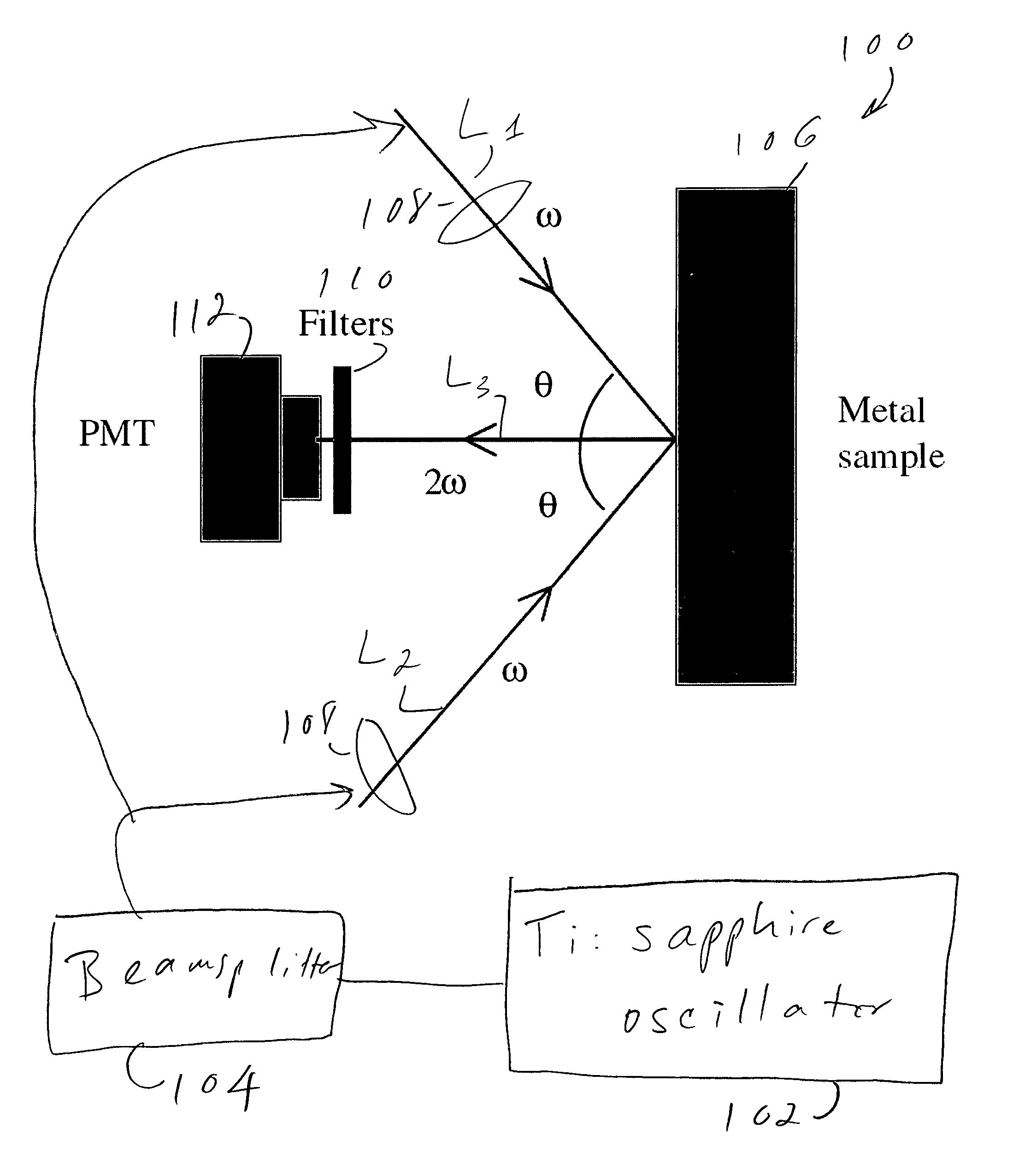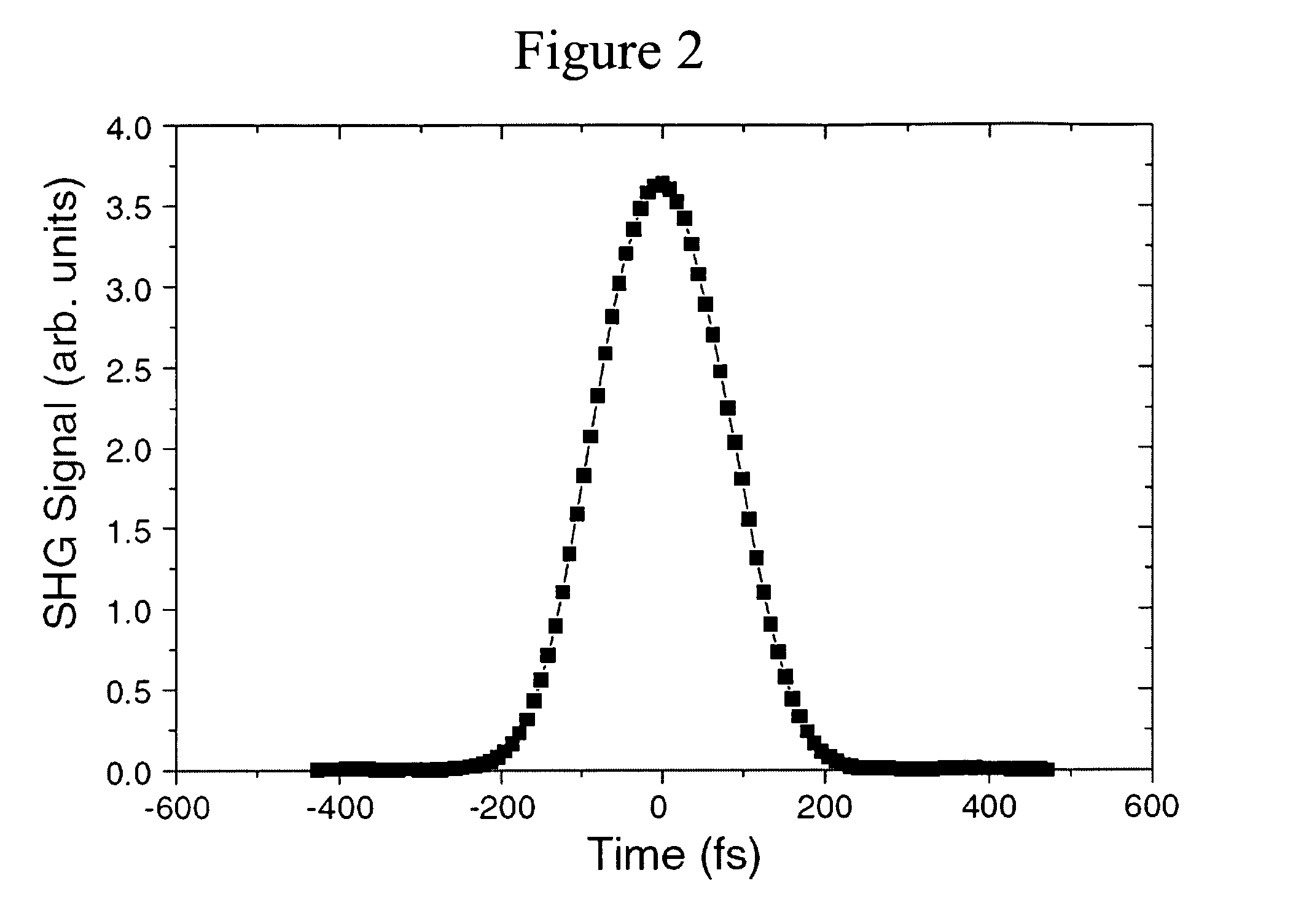Dispersion-free, automatically phase-matched, and broad spectral-band femtosecond autocorrelation technique
a femtosecond, autocorrelation technology, applied in the field of optical autocorrelation technique, can solve the problems of limiting the spectral bandwidth that can be characterized simultaneously, no crystal is known to work efficiently for wavelengths shorter than 400 nm, and the autocorrelation technique is straightforward. , to achieve the effect of eliminating background offset, avoiding material dispersion, and high efficiency
- Summary
- Abstract
- Description
- Claims
- Application Information
AI Technical Summary
Benefits of technology
Problems solved by technology
Method used
Image
Examples
Embodiment Construction
[0024]Two preferred embodiments of the present invention will be set forth in detail with reference to the drawings, in which like reference numerals refer to like elements throughout.
[0025]A first preferred embodiment will be described with reference to FIGS. 1-4. The hardware setup according to the first preferred embodiment is shown in FIG. 1 as 100. The first preferred embodiment 100 uses a femtosecond Ti:sapphire oscillator 102 running at 800 nm central wavelength with a repetition rate of 94.3 MHz. The beam from the oscillator is split into two pulse trains L1, L2 using a 50 / 50 beam splitter 104 such that each path carries nearly half the average power. The two beams L1, L2 are p polarized and focused onto the metal sample 106 with two identical lenses 108. The second harmonic L3, generated through two-overlapping beams at the sample surface, is emitted in the normal direction. A photomultiplier tube (PMT) 112 is used to detect the surface SHG. Filters 110 transmitting 400 nm ...
PUM
| Property | Measurement | Unit |
|---|---|---|
| wavelength range | aaaaa | aaaaa |
| wavelengths | aaaaa | aaaaa |
| central wavelength | aaaaa | aaaaa |
Abstract
Description
Claims
Application Information
 Login to View More
Login to View More - R&D
- Intellectual Property
- Life Sciences
- Materials
- Tech Scout
- Unparalleled Data Quality
- Higher Quality Content
- 60% Fewer Hallucinations
Browse by: Latest US Patents, China's latest patents, Technical Efficacy Thesaurus, Application Domain, Technology Topic, Popular Technical Reports.
© 2025 PatSnap. All rights reserved.Legal|Privacy policy|Modern Slavery Act Transparency Statement|Sitemap|About US| Contact US: help@patsnap.com



